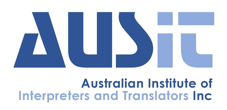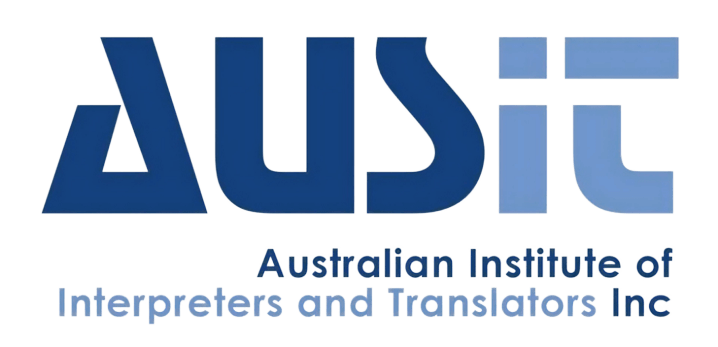SPECIAL FEATURE: PRACTITIONERS’ TIPS
Experienced translator, translation checker and proof-reader Eirlys Chessa recently emailed us this very handy set of tips ‘to pass on … to my colleagues … and potentially also to clients and project/translation managers’ about feedback and marking up text.

… the best tip I gained from the entire course was the use of ‘perhaps consider …’
These are words from the heart, looking back and reflecting on more than 30 years’ personal experience to try to condense my philosophy and modus operandi. My apologies in advance for any omissions – others may have had entirely different experiences.
I attended an elective on proofreading and editing while studying towards my formal T&I qualification from RMIT just over 10 years ago, by which time I had already been checking other translators’ work for more than 20 years. My first experience of translation checking in Australia was in the early 1990s, when working for TIS in Canberra, and later I checked translations as a freelancer for various companies.
I signed up for the elective because I wanted to gain a keener insight into the ethics of proofreading and how to go about the task in a respectful, non-judgemental, friendly and consistent manner. So here are my tips:
Arguably, the best tip I gained from the entire course was the use of ‘perhaps consider …’ – a powerful yet gracious phrase which conveys validation of the writer’s work and aims to make suggestions without imposing your views.
If we mark a word or phrase and want to suggest potential improvements, we can do so politely and tentatively (rather than categorically). In this way, it is clear to the receiving writer that they have been understood, and that these are options to consider and either accept or set aside (I do not favour the negative implications in the verb ‘reject’, even though it is commonly used in editing/reviewing software).
As writers (and as translators) we need to learn to accept feedback gracefully and provide it equally as gracefully. I believe this is both a skill and an art, as well as a lifelong attitude (I am still learning and love learning).
We also need to learn how to look out for feedback and/or consider providing feedback on feedback (even proofreaders and checkers need constructive feedback, and to know we are appreciated – it does wonders for our self-esteem!).
When using editing software, and indeed when simply ‘tracking changes’, we have two main options: ‘corrections’ (which include deletions and insertions) and ‘comments’ (which are usually explanatory). My best advice, based on experience, is as follows:
Perhaps reserve corrections for where the text has typos, grammatical or linguistic errors, and/or obvious additions or omissions that substantially change the meaning of the text.
Try using comments only when suggesting the writer (or translator colleague) consider alternatives. As a first translator, you can also leave comments to explain your choices to your checker and/or save their time by providing links to available precedents.
Consider combining corrections and comments to correct and highlight apparent inconsistencies (between phrases/segments or across related projects).
Some software allows translators and proofreaders to communicate in writing (even anonymously) with each other and/or with the project manager via an online ‘chat’ function. If available, consider making use of it – if used well, it can save time spent writing emails or making phone calls. My father, who was a librarian and amateur Latinist and historian, taught me the Latin proverb Verba volant, scripta manent (Spoken words fly away, written ones stay). It has coloured my outlook on life, and applies well here – it’s always good to have a paper trail to help justify and explain choices to clients.
Take your time and try to resist the temptation to speed up the proofreading process by using ‘search & replace’ features. Being thorough shows respect for your own physical and mental health, for your colleague’s work, and ultimately for your clients. Rather, if you think you need more time, let them know in advance. Your efforts will be the better for it, and your honesty and integrity will be all the more appreciated. No deadline makes it worth handing in work that is ‘good enough’ while knowing it will probably need further revision (which in turn affects the return to the client and the related costs and stress for all parties). Please bear in mind that most of our work is read by members of the public and/or officials, some of whom may also be fluent in our language pairs.
Often skipped, this is a crucial part of providing guidance and feedback. It also enables the project manager to better understand the reason for the corrections, to facilitate future decision making, and to provide feedback to the client, translator and checker.
If not already provided by your project manager or translation manager, you might consider suggesting that you all agree on a list of one-word comments or brief phrases to ‘grade’ errors and inconsistencies (and save everyone’s time in the process), for example:
‘Style’ merits a particular mention. Please remember that style is individual, and is not ’wrong’ unless there is an error of consistency (for example, in contrast with precedents or the overall style of a publication) or of register (for example, colloquial versus formal or topic specific). In such cases, providing constructive feedback is an important part of the editing process.
We all have different learning and writing styles – some of us learn by reading, others by listening or by doing. If you believe the writing style could improve or is inappropriate to the topic, you can always add a comment that includes an example or a link to an online precedent. This will show the original writer or translator that you respect their work (and learning style) and have also thoroughly researched the topic before making a style-based correction. In this context, you can use phrases such as ‘perhaps consider …’ or ‘with reference to segment X in this project’.
Knowing your software makes for a much more relaxed and holistic approach to your work: take the time to learn its features and use them both proactively and reactively. Do not be afraid to leave translator’s notes (as comments, footnotes or even as a separate document or in the submission email), to seek clarifications, or to ask questions. Life is a learning process, and we humans often struggle to cope with the speed at which the latest software is programmed to evolve and adapt.
Fact: we humans have feelings, computers do not. Some of us feel the need to be verbose and detailed (as you can see, I’m one of these! ), while computers don’t need lengthy explanations, just simple instructions (if X, then go to Y), as they ultimately still operate via binary code (on/off, accept/reject). If we understand this, we can be more at peace with both using the software and accepting/rejecting corrections and suggestions. We can also make informed decisions on where it is constructive to leave a lengthy comment, and where to be concise.
Quality assurance (QA) button: If you are proofreading with software that includes and detects ‘tags’ (elements inserted in text to change the look of content or perform actions), and you need to ‘run a QA’ on the project as part of the proofreading process, it can be helpful to know the effect of any tags used and why they may be present in a segment.
Some software will allow you to ‘expand tags’ to see the coding they contain. They may change font style, colour or size, insert a line break, activate a hyperlink, and so on. If you make changes to tags, or to text between tags, the target text may appear differently on the page compared with the source text.
For example, tags around the title of a piece of legislation may be there to change the font to italics. These titles must remain as they are, we can’t insert target language words within a source text title to make it flow or to explain it, as one translator had done in a text that I checked. (My best practice recommendation – similar to AUSIT’s one for names of official bodies and courts, see link in Tip #5 – is to precede with the translation of the title, then follow with the source text title – retaining its italics – between square brackets. And if we want to avoid double brackets we can use commas or dashes within brackets, as I just did!).
If in doubt, ask your project manager or refer to the Australian Government Style Manual (see below) before making substantial changes to a text or translation. Individual clients and companies may also have their own style guides or sets of guidelines or preferences.
Keep a copy of both of these close by, they are really helpful when you need formal guidance. The Style Manual also provides tips on proofreading and editing (and if you have similar style guides in your other language(s), by all means keep them on hand too!). And for those who prefer the screen to flipping through pages, here are links to their online versions:
AUSIT Code of Ethics
Australian Government Style Manual
As previously mentioned, AUSIT provides ‘best practice’ guidelines for the translation of official and legal documents, which you can access here.*
Also online, you can subscribe to specialised dictionaries, glossaries, thesauri and style guides in English and other languages. Colleagues in your language pair and/or field may be able to help you decide which will work best for you.
I hope you have found at least some of this interesting, useful and/or helpful.
All the best,
Eirlys
* AUSIT’s ‘Best Practices for the Translation of Official and Legal Documents’ guidelines are currently being revised.


